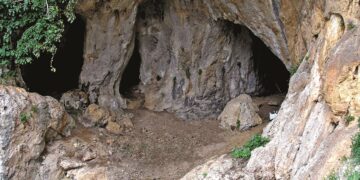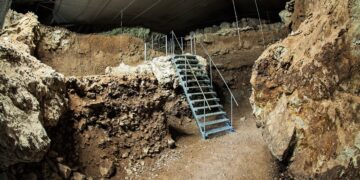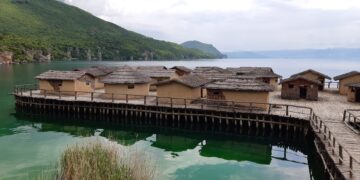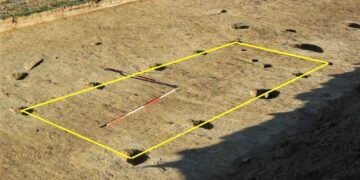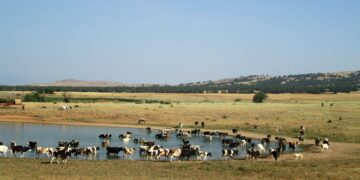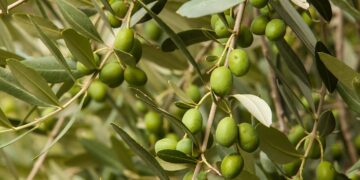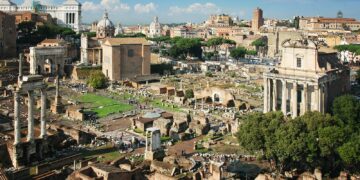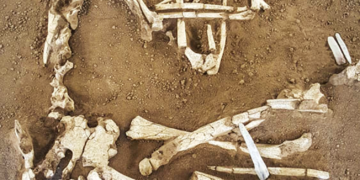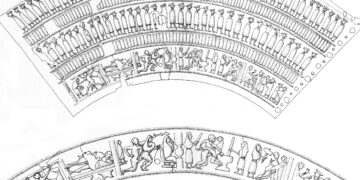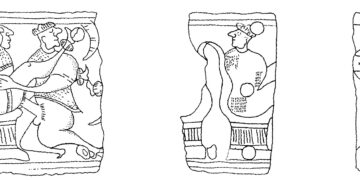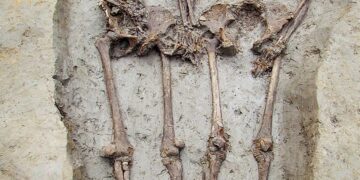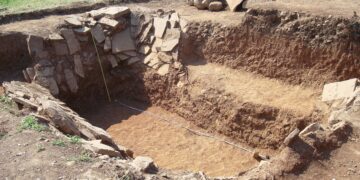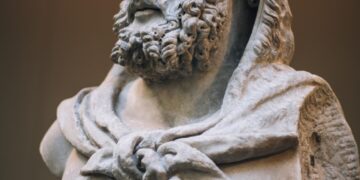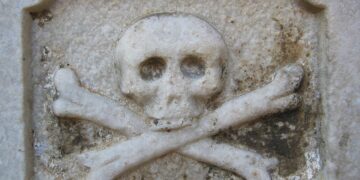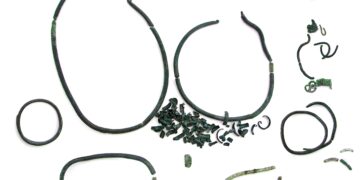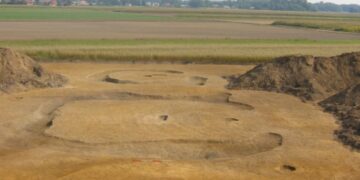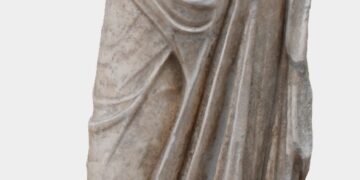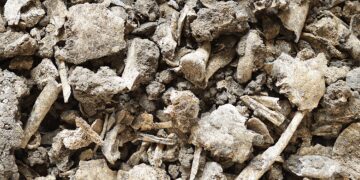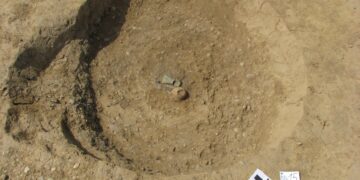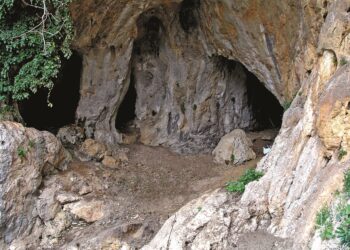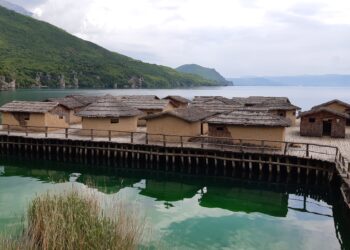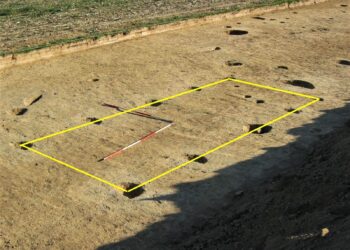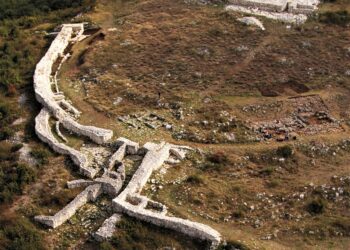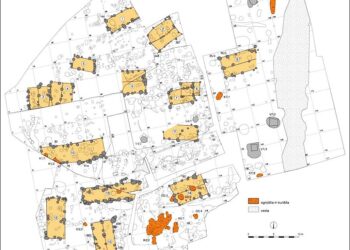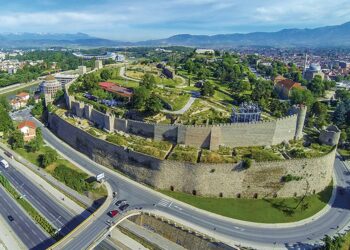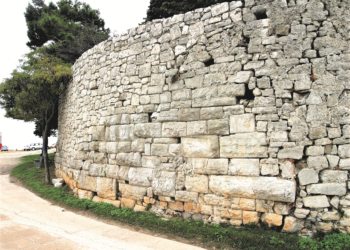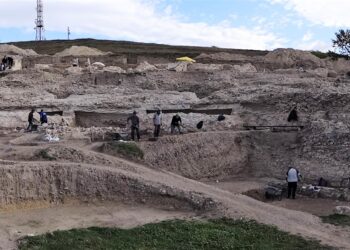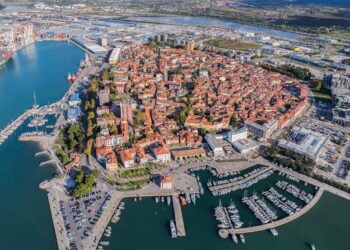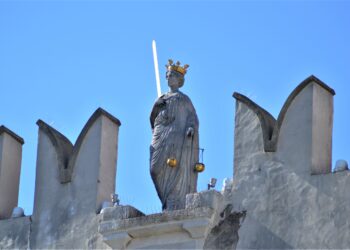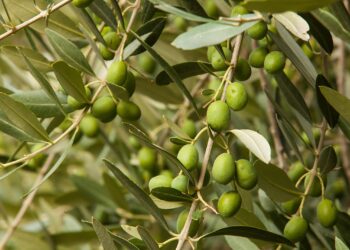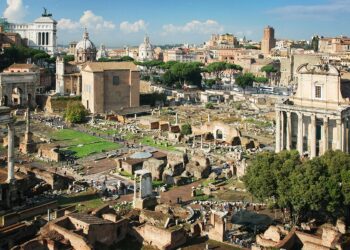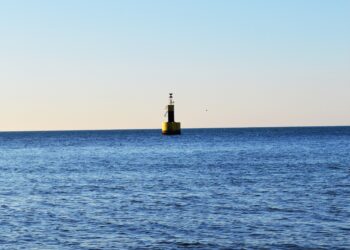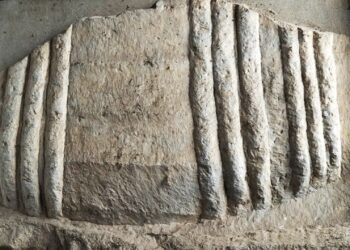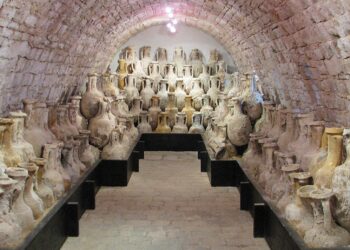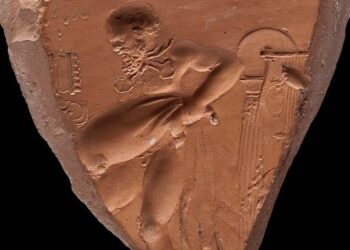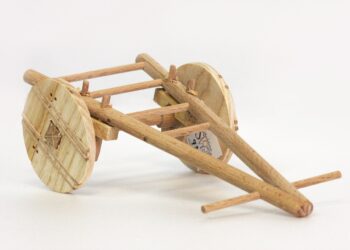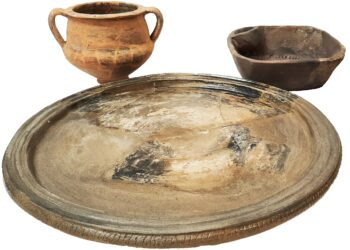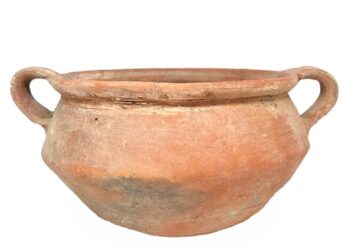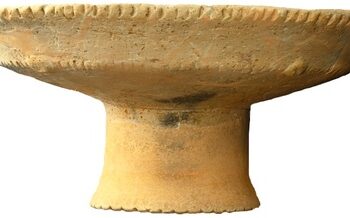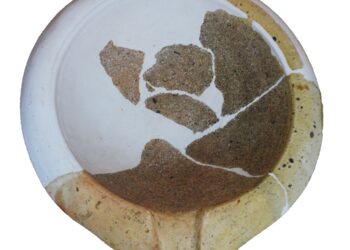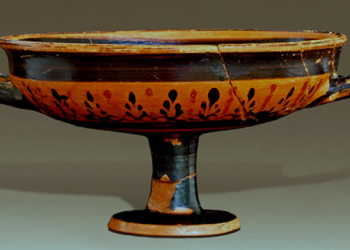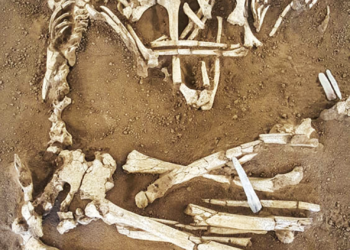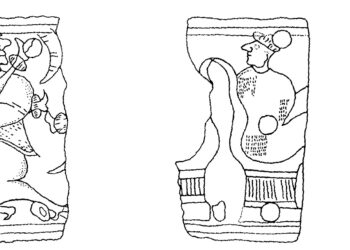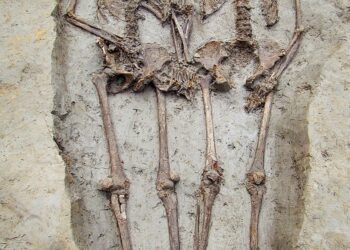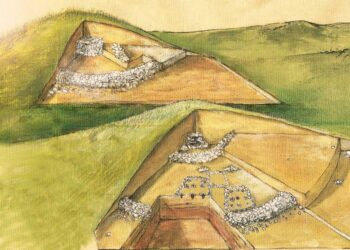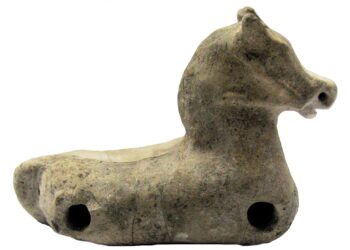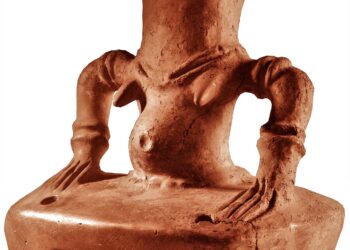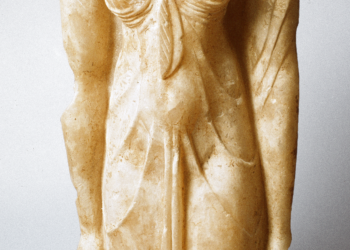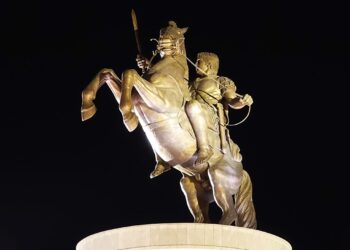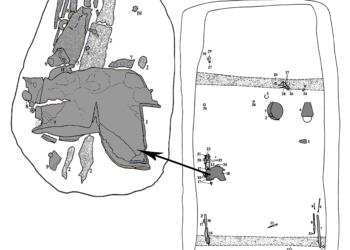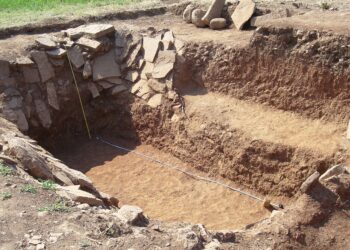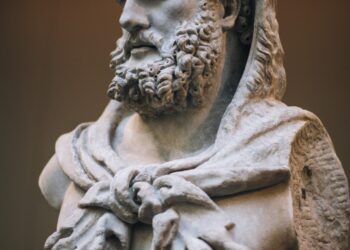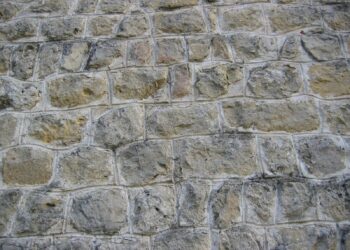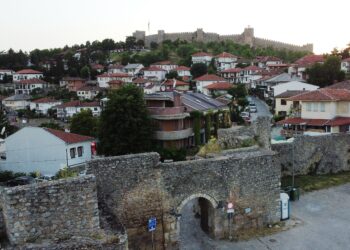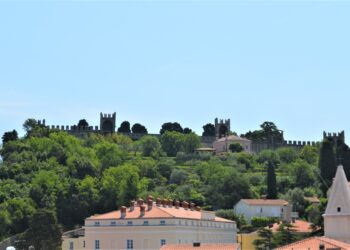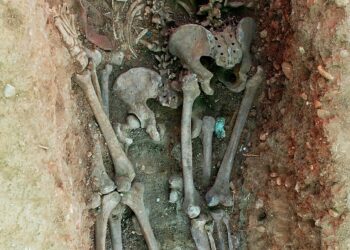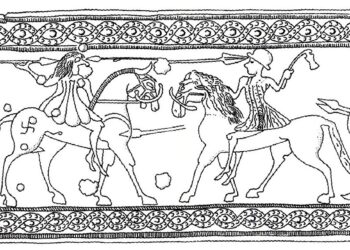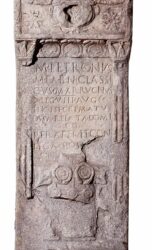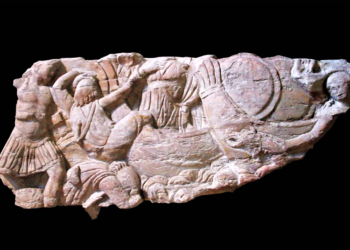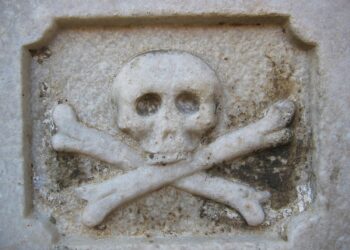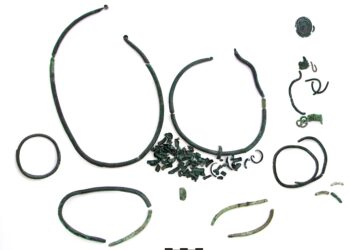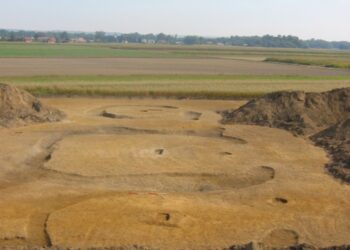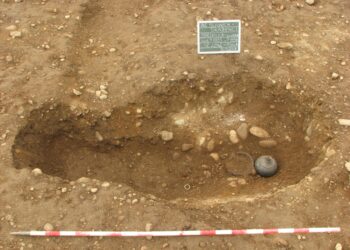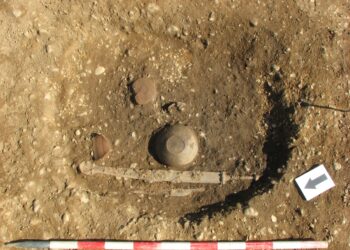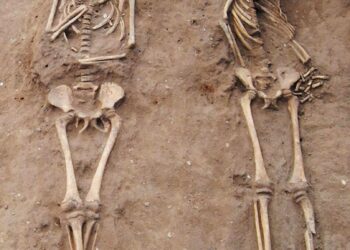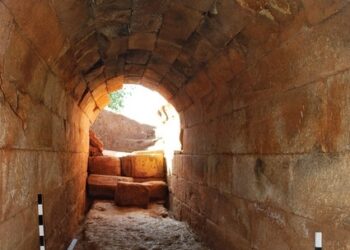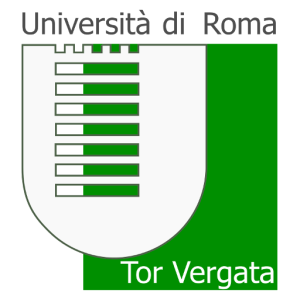Introduction
Too often, we make mistakes and assume that people in the Palaeolithic used caves as settlements – this assumption contains...
Read moreDivje Babe 1
One of the most infamous archaeological sites in Slovenia, which produced several sensational discoveries that changed the perception of the...
Read moreZaljev na Koskite / Bay of the Bones
Documented in the first half of the 19th century, the palafittes, settlements on platforms erected in shallow waters of New...
Read moreConclusion
Today archaeology is not only a science of artefacts and landscapes – it is the proper way to understand and...
Read moreIntroduction
Archaeologists have studied hillforts for the last 140 years. The variability amongst them in terms of their size, form, defensive...
Read moreVilazora / Bylazora
No other story in history triggered so much our adventurous imagination than the rumours of a lost city, and no...
Read moreSkopsko Kale
On the hill called Kale, dominating today’s vista of the city of Skopje, archaeological excavations have discovered remains of 6000...
Read moreConclusion
Each hillfort seems to be the expression of a local group and was an individual site rather than a part...
Read moreIntroduction
In the ancient and medieval world, a city describes an urban centre of dense population and a certain pattern of...
Read moreConclusion
The biggest problems in the past was the population increase. If prosperous villages attracted more people and grew steadily it...
Read moreThe human relation to food is a complex one. We obviously have to eat to survive, but for the most privileged humans through history, food is something to indulge in for fun rather than a necessity. It is by virtue of the evolutionary gift to humans, the innate intelligence and exploration, that their expanding brain, demanding more nutrition has expanded the varieties of food for a human platter. Climate and environmental changes during the evolution of human ancestors triggered that people optimized the search for food, when the natural resources were dwindling, learned to build fire, improved their cooking skills and technologies, domesticated plants and animals… All these were the contributing factors for humans that expanded the varieties of foods they can eat compared to other animals that eat limited varieties of food. Throughout most of history, we could not transport perishable foods before they would go bad, so people lived on much less variety of food than we do today. People traditionally consumed a diet dominated by whatever starches they were able to grow in their climate creating ethnic cuisines where most dishes were made up of a small number of common, inexpensive ingredients. However, with the creations of states and empires the production of food, and most important trade with food, changed dramatically. Not only staple foods but the luxurious products, hard to obtain and difficult to trade before going bad, linking the most remote corners of the world.
Introduction
The development path leading to agriculture and animal husbandry started independently in several parts of the world. For us was most important the process that started some 13 thousand years ago in the Near East – in an area that was home to a variety of easily cultivated plants and animals suitable for domestication. If organized hunting in the distant past, was the first collective enterprise in which humans engaged, it was the introduction of agriculture that most dramatically changed the...
Read moreGrain
It all started with wheat and barley. It was a process of intensification used to extract resources from the environment. The novelty developed in the near east spread through a combination of migration and diffusion to Europe. Shortly after 9000 BP wheat, sheep, goat, pigs, barley, lentils became the resource base in southeastern Europe. In the following millennium, cattle was added and the innovation spread across the Mediterranean. The bases for European subsistence were to some degree dictated by climate and...
Read moreLivestock
Sheep and goats were the first animals to be domesticated and formed together with pigs and later cattle the bases of the Neolithic pastoralist economy. Traditionally in the Mediterranean, the private households would have kept a small number of animals, perhaps not more than 50. Before the Classical period in Greece, they mostly did not manage large herds of livestock to create a saleable surplus and specialized pastoralism with its necessity to seasonally move animals between pastures in different climate zones....
Read moreOlive
During the Early Bronze Age, we have witnessed in the Mediterranean a marked population increase that leads to the development of extensive settlements although the pattern of small hamlets and farmsteads still prevailed. One of the important factors in this process was the change in agriculture production that followed the adoption of wine and olive cultivation. These were commodity-oriented activities that furthered exchange and redistribution – products were more suitable for redistribution than for a household economy. Olives demand capital investment...
Read moreConclusion
The impact of agriculture has been profound on humanity, most clearly in terms of population. This is because breeding plants and animals have significantly increased the availability of human consumable calories per square kilometre. One way to think about it is that we replaced things that were not consumable by humans with things that were. Through techniques like irrigation, we were also able to make things grow where they might not have before. Having a large population nearby made it worthwhile...
Read moreIntroduction
Generally speaking, ancient civilizations gradually developed a more sophisticated economy following the creation of an agricultural surplus, population movement and urban growth, territorial expansion, technology innovation, taxation, the spread of coinage, and not insignificantly, the need to feed the great city centres and supply its huge armies wherever they might be on the campaign. The ancient economy displayed features of both underdevelopment and high achievement since it exhibited and an over-dependence on agriculture displayed a slow diffusion of technology and a...
Read moreBarrel
One of the major technological inventions in antiquity, most probable derived from boat building technologies, was the discovery, that the wood can be bowed and bent if it is heated. In barrel, production bowed planks of arched wood were made into staves then assembled and encircled using bands of iron. We should not forget that the development of ironworking technologies produced tools necessary for the working of hardwood such as oak. Previously there were loosely slatted buckets, but this difficult art...
Read moreAmphora
At the core of the concept, which was used in the last century to describe numerous two-handled ceramic vessels, are still Greek and Roman amphorae. They are pottery containers used for the non-local transport of agricultural products and their remains are scattered across all archaeological sites around the Mediterranean. Being the subject of intensive research, they provide to the archaeologist’s crucial information about the inter-regional and long-distance movements of agricultural products within the economic networks. Not only their shape, but also...
Read moreWineskin
Archaeology is about facts – it focuses on the interpretations of material remains of ancient societies. However, sometimes these remains, especially those produced from organic materials; simply do not survive through the millennia. Moreover, wineskins were such items. Known from numerous depictions of life and religion in the ancient world, we can never find them in museums. Well, we can find their modern reconstructions. We can be pretty sure that they are the oldest form of transport containers for liquids –...
Read moreConclusion
Meals in the Mediterranean revolved in the last 10 millennia around the common staples of cereals, vegetables, fruit and olive oil – with an occasional bit of fish and meat for those who could afford it. The Greek and Phoenicians spread their food production and cuisine with their colonization and the Romans just further developed this process. Olive oil and wine became the major exports transported from the Mediterranean into Central Europe. Especially Roman cooks developed new technologies for the preservation...
Read moreIntroduction
Pottery’s introduction allowed more variety of shapes and types of storage and food production in a kitchen, from double-walled cooling jugs for water to tripod pots for stews and pointed amphorae for wine. Especially the development of new technologies of pottery production and decoration as well as the use of metal vessels had a major impact on the presentation, serving and consumption of food. Food was much more than just a source of nourishment and subsistence. Its richness coloured culture, history,...
Read moreCooking pot
Perhaps the humblest part of the archaeological remains from a site’s collection of artefacts are the cooking vessels, but they were also some of the most important. The purpose of these vessels was to cook and consume a meal, a meal that had no small amount of religious and convivial importance in ancient societies. These pots do not tell us only about our feasters, their very shapes give us information about the local production and pottery trade. These simple cooking vessels...
Read moreServing bowl
Ever since pottery was discovered, bowls were used to present and consume food. And since did not eat only with their mouths – the open form of the bowl enabled them to see exactly what was inside the container and it enabled the smells to fully develop and diffuse. Eating was not only a process of satisfying the basic needs to survive – it was pleasure and amusement, a social event of crucial importance for the creation of social relations between...
Read moreMortarium
The ceramic Roman mortarium is thick and heavy and has a broad rim to enable the cook to put some energy into grinding and bruising without fear of breakage. A section of the rim has been adapted to form a flat spout to enable the prepared herbs or spices to be poured out of the mortarium into another smaller container or jar. The mortarium was hand thrown, wide and deep enough for herbs and spices to be mixed energetically without spilling...
Read moreConclusion
Traditionally in ancient societies, a woman, sometimes an older relative or matriarch has been the cook. A woman's domain, the kitchen was also the focal point for transmission of culture and teaching younger family members and apprentices. Even the use of kitchen servants in wealthy households was tied to the housewife or housekeeper. Often the main point of connection between master and servant was between the mistress of the house and the head cook. The kitchen became a meeting place between...
Read moreIt is easy to think about love in purely romantic terms, but the theme of love occurs in the past in a variety of contexts – from cosmological speculations on the structure of the universe to medical theories of emotions, from philosophical investigations into the nature of friendship, from poetic accounts of the birth of gods to purely carnal pleasure.
Introduction
In antiquity, people did not consider themselves to be defined by such a thing as “sexuality”, and the sex of...
Read moreD’Alpago (Belluno)
Situla is a bronze bucket that was very popular in the Early Iron Age and appreciated by the aristocracy in...
Read moreConclusion
What is love? We all wish to have the answer to one of the most universal, mysterious, and all-permeating phenomena...
Read moreIntroduction
How do we measure attitudes such as love towards children in Prehistory, Antiquity and Middle Ages? Were children highly valued,...
Read moreConclusion
Children were also made objects of admiration, particularly by being idealized (as “pure”) or sentimentalized (“sweet” and “funny”). This can...
Read moreIntroduction
The many gods of the religions of the ancient world fulfilled their function as specialists in their respective areas. In...
Read moreOhrid – Deboj
If there was one aspect of the Hellenistic civilization, which served more than others to accent the contrast with Hellenic...
Read moreConclusion
The human nature of ancient gods derived from their creator’s passion for symmetry and moderation. To the Greek way of...
Read moreThroughout history, individuals, states or political factions have gained sovereignty over regions and resources through the use of war. Warfare, regrettably a universal human experience and more specifically battle, is the essential experience of war, containing the moments when the will, the motivation, and the psychological reserves of the combatant were tested to their fullest extent.
Introduction
In all parts of the world and all civilizations the history of warfare, as well as the ironic humour of those who fight and die, can be traced back to the earliest written records. Though, the vocabulary of modern warfare derives from Greek and Latin while metaphors of conflict...
Read moreZavrč
In the Late Bronze Age, the world changed dramatically, perhaps this was the most dramatic transformation of human society after the adoption of agriculture. With the largescale production of bronze not only technology changed, but also long-distance trade with metals and other luxurious goods. It was not only the...
Read moreNovo Mesto
Numerous modern ministries of defence sack up thousands of young men and woman each year from armed forces for homosexuality, which is mostly deemed “incompatible with military services”. The cost is immense if we consider the loss of experienced personnel, not to mention that ministries are engaged in degrading...
Read moreKoreshnica
In almost every medium of Greek art of the 6th century BC the hoplite and warfare feature prominently, as military service was a primary distinction of citizenship – a mark of status and often of wealth, as well as a means of attaining glory. In the hinterland of the...
Read moreConclusion
Fighting wars was never just about conflicts. It was about the perception of one-self and our friends and relatives, it was about controlling land and dreaming about ancestors and talking to gods. Heroes were bellowed by the gods and damned by them. They were the central pillar of society...
Read moreIntroduction
Sometimes walls strike aside attackers, but sometimes they just hide what is preserved inside of them. Instead of intercepting the incoming, they restrain the diffusion of what is kept behind them. The research of city walls did not highlight only the chronological and regional variations enabling scientists to rethink...
Read moreOhrid – Gorna Porta
The necropolises of the ancient town of Lychnidos were discovered in several locations within and around the city, but due to exceptional discoveries at the beginning of this century, the Gorna Porta holds a prominent place among them. The complex was located alongside the Northern wall of the Ohrid...
Read moreViničko Kale
The site of Viničko Kale is situated southeast of the city of Vinica in Northern Macedonia. The research of the castrum started intensively in 1977 when two intact and five fragmented terracotta icons were discovered. In years to follow, a large proportion of the site was excavated producing finds...
Read moreConclusion
Today we realise that city walls do not represent only emergency responses to unstable political circumstances and imminent threat. Moreover, their imposing dimensions and the extraordinary care with which they were assembled indicate that they were conceived as ostentatious and visually striking public monuments. They were monumental statements about...
Read moreIntroduction
Today the reader from the comfort of historical narrative can only hardly think and rethink the use of armed coercion as an instrument of ancient policy. Warfare was always seen as unavoidable evil of the human condition. Whether it be small frontier skirmishes between neighbouring city-states, lengthy city-sieges, civil...
Read morePtuj
Poetoviona was the most important Roman city on the territory of today’s Slovenia. Originally a Celtic centre, it was occupied in the Augustan period by the Augustus Eight Legion that remained there for almost half of the century. One of the most extraordinary documents, not illustrating only the process...
Read moreConclusion
The actions of ancient warriors were shaped by habits and customs influenced by the socio-economic and practical military context in which they fought. They were bloody-minded pragmatists that pursued the complete destruction of the enemy – but they had very limited means at their disposal to achieve this. The...
Read moreDeath in the ancient world – as in all pre-industrial societies with a high degree of mortality – was part of everyday life. Death is perhaps the most universal of all human experiences, and the process of coming to terms with our own death and coping with the death of others stands at the centre of much of religion, philosophy, and culture since time immemorial. This course offers an exploration of central myths, beliefs, practices, questions, fears, and hopes associated with death in antiquity, and ranges across different times and places, from ancient Egypt and Mesopotamia through Greece and Rome to early Judaism and Christianity. The purpose of this course is to be acquainted with some of the most interesting and influential ideas on death in the history of human civilization while developing a historical and contextual perspective on those ideas.
Introduction
Many of the objects we find as grave goods could have been worn on the individual’s body during their life...
Read moreConclusion
In Denmark, more than 90% of the dead Copenhageners get cremated, and about 2/3 of these people end up in...
Read moreIntroduction
These people were given neither marginal nor particularly dignified burials, suggesting that they were all common and integrated members of...
Read moreConclusion
Archaeology shifted in the last decades from the research of “big” historically important persons towards the research of everyday people,...
Read moreIntroduction
Death is very common in Homeric epics and therefore, so are funerals. Homer spends a lot of time describing these...
Read moreBonče / Bonche
Staro Bonče is a complex of more than 17 archaeological sites that extends over the mountain range of Selečka Mountain...
Read moreOhrid – St. Naum
Saint Naum was the youngest disciple of Ss. Cyril and Methodius and attended their mission to Great Moravia and Lower...
Read moreConclusion
We study different types of evidence – archaeological, textual, and visual – in order to reconstruct the mortuary rites, and...
Read more
